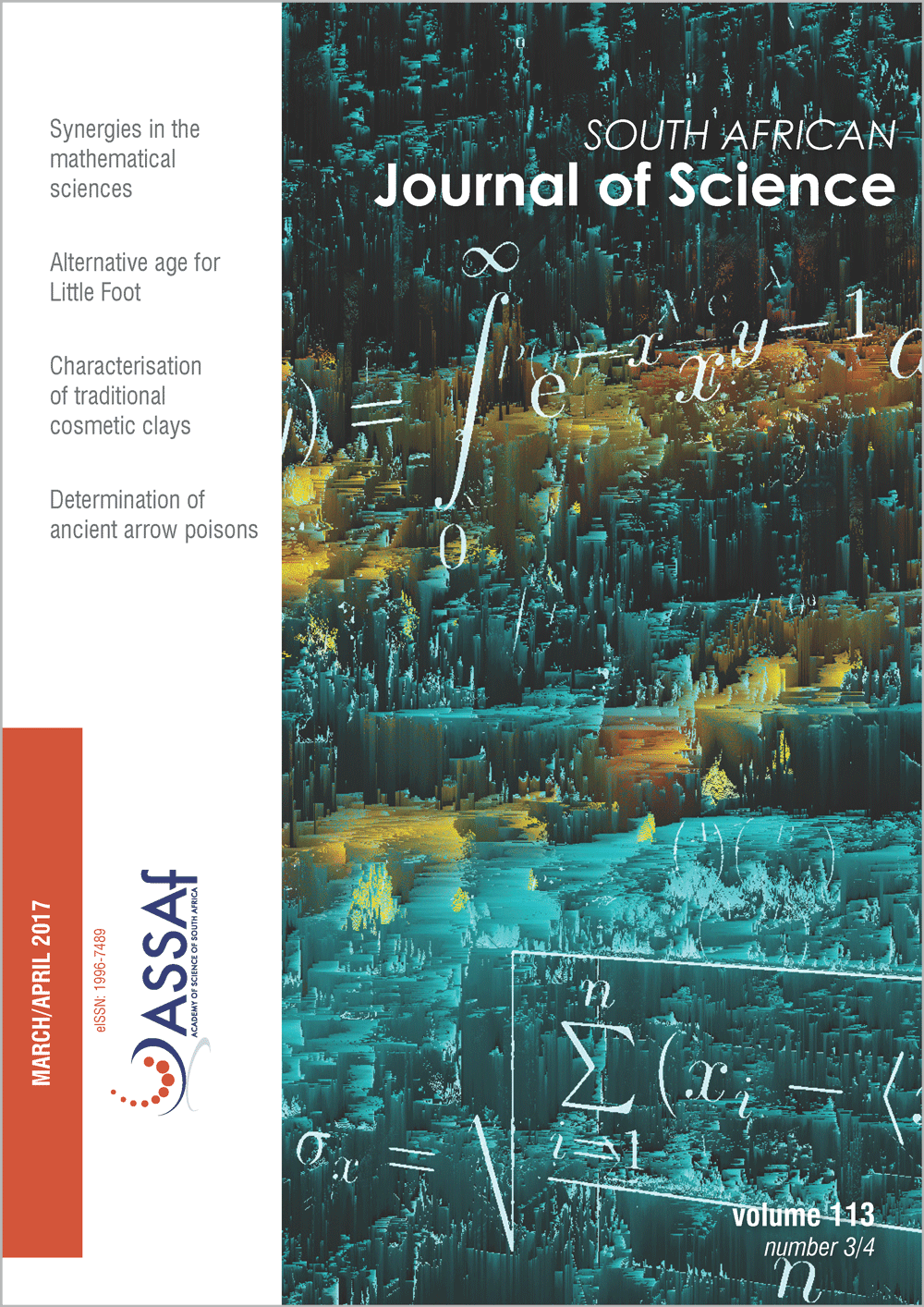Co-infection with Schistosoma haematobium and soil-transmitted helminths in rural South Africa
DOI:
https://doi.org/10.17159/sajs.2017/20160251Keywords:
urogenital schistosomiasis, KwaZulu-Natal, Ascaris lumbricoides, Trichuris trichiura, schoolchildrenAbstract
Schistosomiasis and soil-transmitted helminthiasis are among the most prevalent neglected tropical diseases and may lead to severe consequences. We assessed the extent of co-infection between Schistosoma haematobium and the soil-transmitted helminths (STHs) Ascaris lumbricoides and Trichuris trichiura in schoolgirls in the rural areas of KwaZulu-Natal, South Africa. We also explored if S. haematobium can serve as a predictor for soil-transmitted helminths in this area. From 15 selected schools, 726 primary schoolgirls aged 10–12 years provided both urine and stool samples. The samples were examined for the presence of eggs using the urine sedimentation technique for S. haematobium and the Kato Katz technique for STHs. Pearson’s chi-square test was used to calculate the association and Spearman’s rank correlation was used for the correlation analysis. There was a highly significant correlation between S. haematobium and STHs at a school level (Spearman’s correlation coefficient =0.93; p<0.001). The prevalences were found to be 36.9% and 38.8% for S. haematobium and STHs, respectively. A significant association was found between S. haematobium and STHs (odds ratio =2.05; confidence interval =1.58–2.93; p<0.001). Indirect indicators of urogenital schistosomiasis (e.g. water contact and haematuria) were significantly associated with A. lumbricoides and T. trichiura infection. We have demonstrated a highly significant correlation and overall association between urogenital schistosomiasis and A. lumbricoides and T. trichiura. We cautiously suggest that all S. haematobium endemic areas should be treated for STH infections.
Significance:- The prevalences of urogenital schistosomiasis and soil-transmitted helminth infections were highly significantly correlated.
- More than half (60%) of the investigated schools are in need of annual treatment for S. haematobium infection.
- Almost half of the infected schoolgirls had a heavy intensity of S. haematobium infection.
- Nearly all the schools investigated require treatment for soil-transmitted helminthiasis once or even twice per year.
- This study can contribute to the epidemiological planning process of the deworming programme.
Published
Issue
Section
License

All articles are published under a Creative Commons Attribution 4.0 International Licence
Copyright is retained by the authors. Readers are welcome to reproduce, share and adapt the content without permission provided the source is attributed.
Disclaimer: The publisher and editors accept no responsibility for statements made by the authors
How to Cite
- Abstract 680
- PDF 936
- EPUB 229
- XML 280












.png)